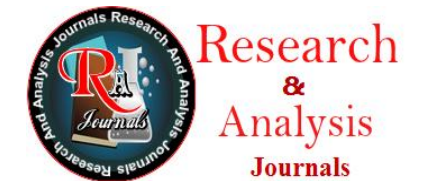The Role of Digital Twin Technology in Enhancing Supply Chain Resilience and Predictive Risk Management
Downloads
The increasing complexity and vulnerability of global supply chains have amplified the need for technologies that enable agility, foresight, and resilience. Amid ongoing disruptions driven by pandemics, geopolitical uncertainty, and climate events, Digital Twin Technology (DTT) has emerged as a transformative solution. While extensively explored in the engineering and manufacturing sectors, its application in supply chain management—particularly its influence on resilience, predictive risk management, operational efficiency, and visibility—remains under-researched. This study addresses this gap by exploring how DTT adoption influences these critical dimensions of supply chain performance. Using a qualitative research design, this study employed semi-structured interviews with 15 supply chain and technology professionals across diverse sectors. The participants were selected based on their experience with digital transformation and risk mitigation in supply chain settings. The collected data was analysed through thematic analysis, allowing the identification of recurring patterns and the construction of thematic categories that reflect the role of DTT in enhancing various supply chain outcomes. The analysis revealed five core themes directly aligned with the proposed conceptual model: Real-Time Data Integration Enhancing Visibility, Simulation and Scenario Planning Driving Risk Management, Organizational Readiness and System Interoperability Influencing Operational Efficiency, Predictive Analytics Enabling Faster Disruption Response, and Strategic Agility Facilitating Supply Chain Resilience. The findings support the conceptual pathway in which DTT, characterized by real-time integration, simulation capabilities, and predictive analytics, significantly contributes to improved supply chain resilience, more effective predictive risk management, increased operational efficiency, and enhanced end-to-end visibility. However, barriers such as data interoperability, high implementation costs, and limited digital capabilities among SMEs were also reported. This study makes a theoretical contribution by empirically validating the multi-dimensional impact of Digital Twin Technology as an independent variable influencing four core dependent dimensions of supply chain performance: resilience, predictive risk management, operational efficiency, and visibility. The findings affirm that DTT enables firms not only to react to disruptions but also to anticipate and simulate potential risks, thus reinforcing a proactive and data-driven supply chain strategy. These insights are particularly relevant for policymakers and business leaders aiming to strengthen supply chain infrastructures in volatile environments. The research also highlights the importance of strategic alignment, technological maturity, and investment in digital capabilities to fully leverage the transformative potential of digital twins.
Ahmad, M., & Wilkins, S. (2024). Purposive sampling in qualitative research: A framework for the entire journey. Quality & Quantity, 1-19. https://link.springer.com/article/10.1007/s11135-024-02022-5
De Azambuja, A. J. G., Giese, T., Schützer, K., Anderl, R., Schleich, B., & Almeida, V. R. (2024). Digital Twins in Industry 4.0–Opportunities and challenges related to cyber security. Procedia Cirp, 121, 25-30.
https://doi.org/10.1016/j.procir.2023.09.225
De Paoli, S. (2024). Performing an inductive thematic analysis of semi-structured interviews with a large language model: An exploration and provocation on the limits of the approach. Social Science Computer Review, 42(4), 997-1019.
https://doi.org/10.1177/08944393231220483
Deepika Reddy, G., Medikondu, N. R., Vijaya Kumar, T., Pesaru, V., Anitha Lakshmi, A., Dixit, S., & Alzubaidi, L. H. (2024). Optimizing smart manufacturing system: a digital twin approach utilizingteaching–learning-based optimization. Cogent Engineering, 11(1), 2415670. https://doi.org/10.1080/23311916.2024.2415670
El Arif, F. Z., & Tahiri, A. (2025). Compliance control systems in financial institutions: a contingency approach. Journal of Financial Regulation and Compliance.
https://doi.org/10.1108/JFRC-07-2024-0131
Guo, D., & Mantravadi, S. (2024). The role of digital twins in lean supply chain management: review and research directions. International Journal of Production Research, 1-22.
https://doi.org/10.1080/00207543.2024.2372655
Hossain, M. I., Talapatra, S., Saha, P., & Belal, H. M. (2024). From Theory to Practice: Leveraging Digital Twin Technologies and Supply Chain Disruption Mitigation Strategies for Enhanced Supply Chain Resilience with Strategic Fit in Focus. Global Journal of Flexible Systems Management, 1-23. 87–109, https://doi.org/10.1007/s40171-024-00424-w
Jariwala, M. (2024). Contingency Planning: The Need, Benefits, and Implementation of Scenario Planning. International Journal of Trend in Scientific Research and Development, 8(3), 866-869. https://www.ijtsrd.com/papers/ijtsrd66027.pdf
Lyytinen, K., Weber, B., Becker, M. C., & Pentland, B. T. (2024). Digital twins of organization: implications for organization design. Journal of Organization Design, 13(3), 77-93.
https://doi.org/10.1007/s41469-023-00151-z
Mazzetto, S. (2024). A Review of Urban Digital Twins Integration, Challenges, and Future Directions in Smart City Development. Sustainability, 16(19), 8337. https://doi.org/10.3390/su16198337
Mubarik, M. S., & Khan, S. A. (2024). Future of digital supply chain management. In The Theory, Methods and Application of Managing Digital Supply Chains (pp. 163-178). Emerald Publishing Limited. https://doi.org/10.1108/978-1-80455-968-020241011
Ogunsoto, O. V., Olivares-Aguila, J., & ElMaraghy, W. (2025). A conceptual digital twin framework for supply chain recovery and resilience. Supply Chain Analytics, 9, 100091.
https://doi.org/10.1016/j.sca.2024.100091
Patil, A., Srivastava, S., Paul, S. K., & Dwivedi, A. (2024). Digital twins' readiness and its impacts on supply chain transparency and sustainable performance. Industrial Management & Data Systems,(ahead-of-print). https://doi.org/10.1108/IMDS-10-2023-0767
Patil, D. (2024). Artificial Intelligence-Driven Supply Chain Optimization: Enhancing Demand Forecasting And Cost Reduction. Available at SSRN 5057408. https://papers.ssrn.com/sol3/papers.cfm?abstract_id=5057408
Ponnusamy, S., Assaf, M., Antari, J., Singh, S., & Kalyanaraman, S. (Eds.). (2024). Digital twin technology and AI implementations in future-focused businesses. IGI Global.
DOI: 10.4018/979-8-3693-1818-8
Rahmani, R., Jesus, C., & Lopes, S. I. (2024). Implementations of Digital Transformation and Digital Twins: Exploring the Factory of the Future. Processes, 12(4),787. https://doi.org/10.3390/pr12040787
Singh, B., & Nayyar, A. (2025). Exploring diverse use cases of digital twins projecting digital transformation: Unlocking potential, addressing challenges and viable solutions. In Digital Twins for Smart Cities and Villages (pp. 631-655). Elsevier. https://doi.org/10.1016/B978-0-443-28884-5.00027-0
Singh, R. K. (2025). Transforming humanitarian supply chains with digital twin technology: a study on resilience and agility. The International Journal of LogisticsManagement. https://doi.org/10.1108/IJLM-08-2024-0504
Tripathi, N., Hietala, H., Xu, Y., & Liyanage, R. (2024). Stakeholders collaborations, challenges and emerging concepts in digital twin ecosystems. Information and Software
Technology, 169, 107424.
Copyright (c) 2025 Faiq Ali Khan, Dr. Shankar Subramanian Iyer

This work is licensed under a Creative Commons Attribution 4.0 International License.
All Content should be original and unpublished.



